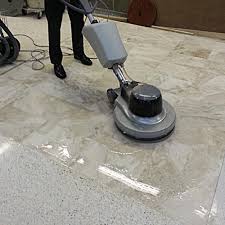Stone restoration is a craft that can seem like time travel. You are taking a step back and encountering surfaces or objects that have witnessed the elements. Decades or even centuries of their history are inscribed into their structure.

We should first ask ourselves why we even bother with stone renovation. Why not just replace old and worn stone with brand-new material? Imagine telling stories that lack character. Restoration means preserving the stories, maintaining aesthetics, and ensuring structural integrity.
Stone restoration can be used to restore a wide range of environments. From the grandiose exteriors of ancient buildings, to the intimate corners in suburban fireplaces. The approaches are as diverse as each stone. You wouldn’t address a toddler with the same language as an adult. The specific treatment for each type of stone (whether it is marble, limestone or granite) depends on its composition.
How can you begin? First, you have to evaluate the damage. It’s not enough to just look at the stone. Instead, professionals will engage in what they call “stone detective work”. This involves uncovering the root causes for deterioration, such as weather elements, pollutants, improper previous interventions, and simply the merciless marche of time.
Next comes the cleaning phase. Gentle is the key. The goal is to coax a timid animal out of its hiding spot, as opposed to charging with guns in hand. It is important to clean the stone gently in order to maintain its integrity. The techniques vary depending on whether the stone has historical or aesthetic value. They can be as gentle as brushing with a soft, meticulously controlled stroke, to using a laser-controlled, precise technique.
Imagine the stone is covered in cracks and crannies, the result of its battle scars. It’s like a magic potions to fill in these scars. It isn’t just any mortar mix. It must match the original material composition, color, thermal properties, etc.
Color matching is also like creating the perfect mix of spirits, mixers and other ingredients. What is the purpose? To seamlessly combine the old and new. Stone restoration can be an art form, if you’re able to achieve a match that fools the most experienced of eyes.
Technology plays an important role in this process. Although it may seem very manual and crafty at first, technology can be a great help. Innovators like 3D scanners and digital maps offer restorations a precision never before seen. This allows restorers anticipate problems and plan their interventions in advance.
Even with these advancements, stone restoration still carries many risks. One mistake and centuries of heritage could be lost. This line of work is more than a career; it’s an vocation. This job requires patience, knowledge and respect. Imagine you’re performing surgery. Your patient, however, is a piece of cultural heritage that’s priceless.
But don’t just paint this scene with solemnity. Restoration of stone can also bring moments of unimaginable joy, such as discovering the original color of a stone that had been hidden by centuries of grime. Or, restoring structural integrity to a building that looked destined to fall. All the challenges are worth it when you see these moments.